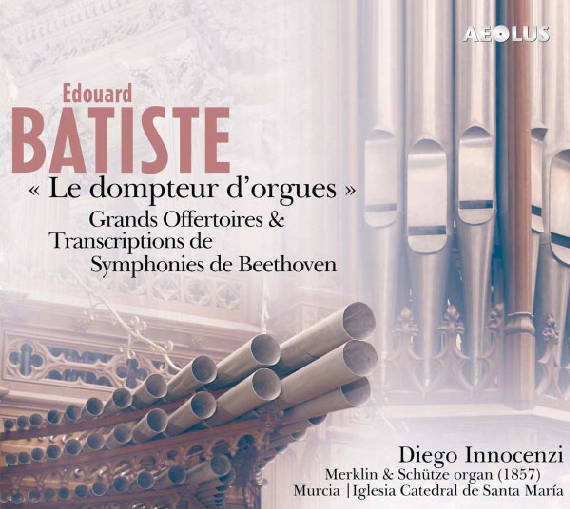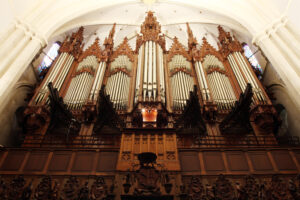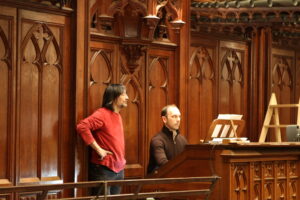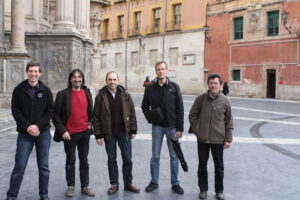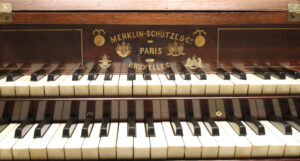| Edouard Batiste (1820-1876) : |
| Offertoire F-Dur [op.10] |
| Elévation c-Moll [op.5, 2] |
| Offertoire F-Dur [op.36] |
| Communion G-Dur [op.4] |
| Offertoire – Fantaisie – Orage c-Moll [op.23] |
| Elévation As-Dur [op.23] |
| Offertoire e-moll [op.27] |
| Communion E-Dur [op.29] |
| Offertoire f-Moll [op.28] |
| Communion a-moll [op.28] |
| Offertoire a-moll [op.38] |
| Offertoire Es-Dur [op.40] |
| Offertoire Es-Dur [op.36] |
| Final de la Symphonie en ut mineur de Beethoven c-Moll [op.30] |
| Communion (Andante de la Symphonie en ut de Beethoven) F-Dur [op.31] |
| Offertoire B-Dur [op.33] |
| Offertoire funèbre (Adagio de la 3e Symphonie de Beethoven) c-Moll [op.31] |
| Grand Offertoire (sur un thème de la Kreutzer-Sonate de Beethoven) F-Dur [op.35] |
| Offertoire (Larghetto de la Symphonie en ré de Beethoven) A-Dur [op.31] |
| Offertoire (Allegretto de la Symphonie en la de Beethoven) a-moll [op.33] |
| Offertoire (Andante de la Symphonie Pastorale de Beethoven) B-Dur [op.32] |
| Elévation (Adagio de la Symphonie en si-bémol de Beethoven) Es-Dur [op.32] |
| Communion (Andante de la Symphonie un ut de Beethoven) As-Dur [op.32] |
| Grande Sortie (Final de la 9e Symphonie de Beethoven) Des-Dur [op.33] |
| Offertoire D-Dur [op.39] |
| Marche solennelle de Hamlet (Ambroise Thomas) B-Dur |
Diego Innocenzi, orgue
Orgue Merklin & Schütze (1857) de la Catedral de Santa María de Murcia (Espagne)
© C. Renaud

